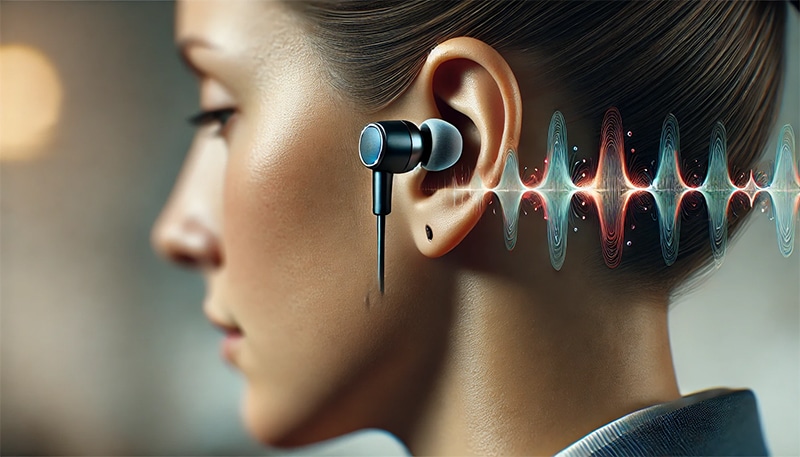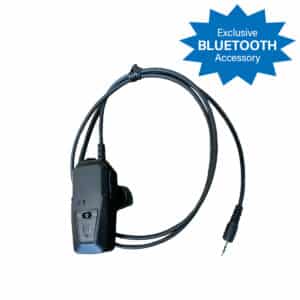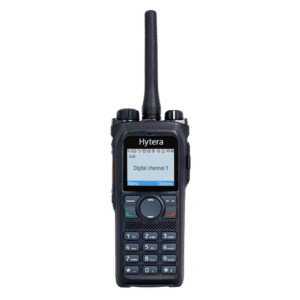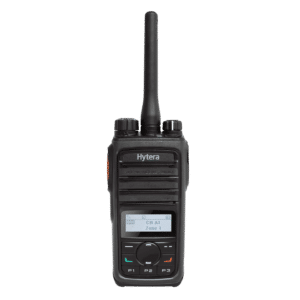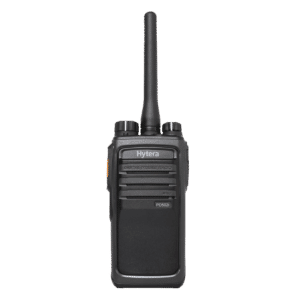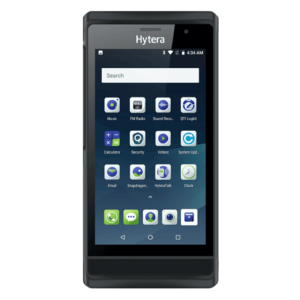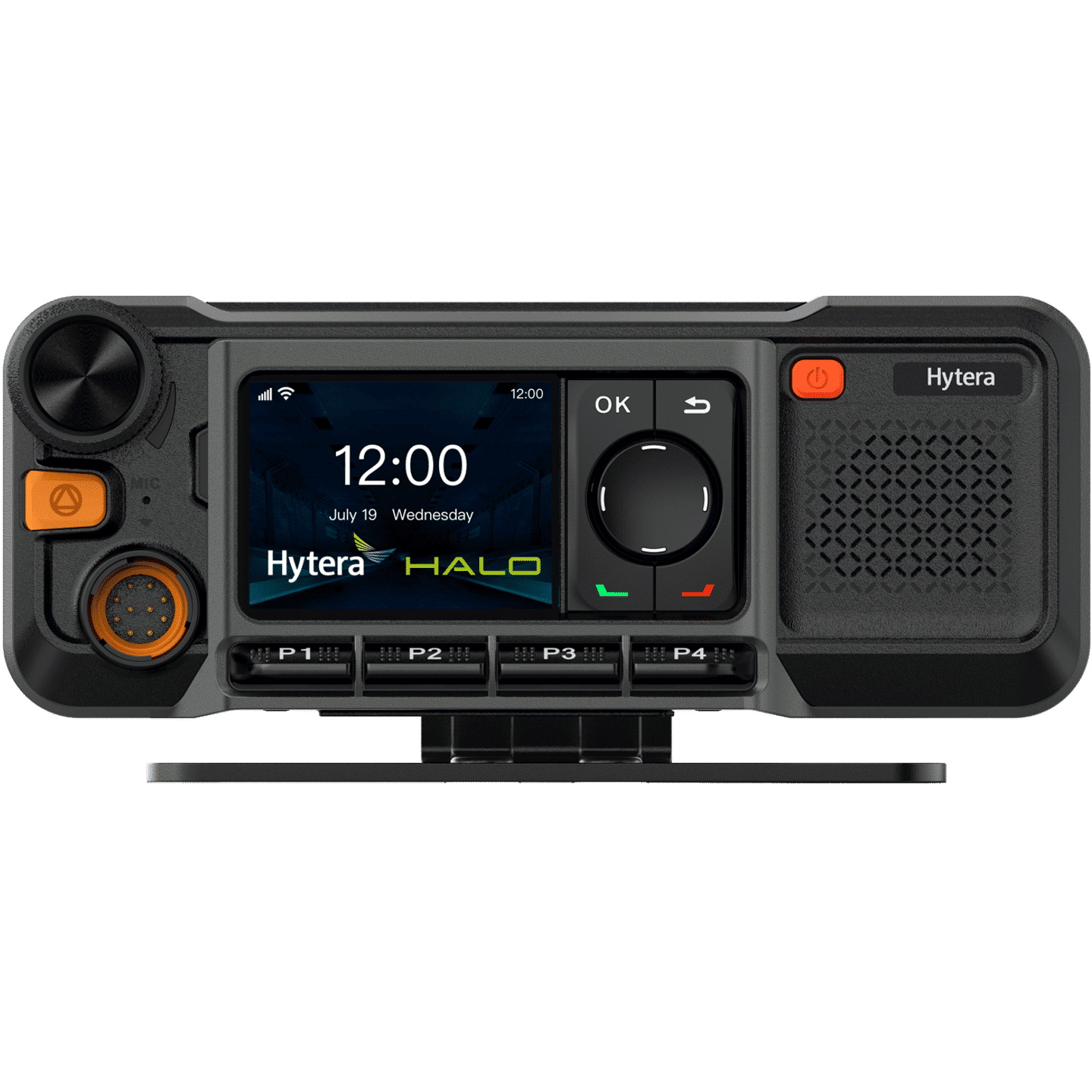Introduction
Voice-activated earbuds are reshaping how we communicate, work, and interact with technology. Their seamless integration with AI-driven smart assistants like Siri, Alexa, and Google Assistant makes them indispensable in today’s hands-free era. This article explores the rapid advancements in this field, the innovative features of popular models, and how they are transforming everyday life.
1. The Rise of Voice-Activated Earbuds
1.1 Overview of the Hands-Free Revolution
The demand for multitasking-friendly devices has surged in recent years, driven by increasingly fast-paced lifestyles and technological advancements. Modern consumers value devices that allow them to remain connected while simultaneously engaging in other activities, such as driving, exercising, or cooking. Voice-activated earbuds have emerged as a key solution in this “hands-free revolution,” offering unparalleled convenience and functionality.
Voice activation technology, integrated with personal assistants like Siri, Alexa, and Google Assistant, enables users to perform tasks through simple voice commands. Whether it’s sending a text, playing music, or setting reminders, these devices significantly reduce the need to reach for smartphones. For instance, while driving, voice-activated earbuds can improve road safety by allowing users to keep their hands on the wheel and their eyes on the road. In addition to convenience, this technology fosters inclusivity. Individuals with physical disabilities or visual impairments benefit greatly from the ability to interact with their devices through voice, eliminating barriers posed by traditional touch interfaces.
1.2 A Glimpse into Market Growth
The global earbuds market has experienced exponential growth. In 2023, IMARC Group reported that the market value of earbuds reached approximately $23.4 billion, with projections estimating it will grow to $101.8 billion by 2032. Voice-activated earbuds, a growing subset of this market, are a significant contributor to this surge.
This growth in consumer trends has manifested as:
- Increased Demand for Wireless Solutions: Consumers are rapidly moving away from traditional wired headsets in favor of wireless options that offer greater mobility and freedom.
- Technological Integration: The pairing of earbuds with smartphones and IoT devices creates a seamless, personalized user experience, further driving adoption.
- Shift in Lifestyle Preferences: With remote work becoming more normalized, earbuds are increasingly used for video conferencing, enhancing productivity and communication.
Industry giants like Apple, Bose and others have capitalized on these trends, releasing high-end products tailored to the tech-savvy and convenience-driven consumer.
1.3 The Pandemic Effect
The COVID-19 pandemic significantly accelerated the adoption of hands-free technology, including voice-activated earbuds. The transition to hybrid work models created a heightened need for tools that support seamless communication and multitasking. Earbuds became essential accessories for remote workers engaging in virtual meetings while managing household tasks.
Moreover, the pandemic emphasized hygiene, leading to the rise of touchless interactions. Consumers sought ways to limit physical contact with devices, making voice-activated earbuds a practical solution.
New use cases also emerged during this period:
- Fitness: Fitness centers closed, and users turned to virtual workout sessions. Voice-activated earbuds enhanced these experiences by allowing users to control their music or follow instructions without pausing their workouts.
- E-Learning: Students and educators adopted these devices for online classes, appreciating their noise-cancellation features and the ability to execute commands while taking notes.
1.4 Demographics and Usage Patterns
Adoption rates of voice-across demographics, with younger users being the most enthusiastic adopters. A Canadian Health Measures Survey reported that individuals aged 19–29 use headphones or earbuds for an average of 7.8 hours per week. In contrast, those aged 30–49 average 5.5 hours per week, and individuals aged 50–79 average 5.2 hours per week.
Regional variations also play a role in shaping preferences:
- North America: A mature market, advanced technologies like active noise cancellation and voice activation are highly valued.
- Asia-Pacific: The fastest-growing region due to the affordability of mid-range earbuds and rising tech awareness among younger populations.
- Europe: Consumers prioritize sustainable and eco-friendly designs, pushing manufacturers to innovate.
Gender differences in usage patterns are subtle but notable. For instance, women are more likely to use voice-activated ear buds for multitasking during household chores, while men tend to favor their use for fitness and gaming.
2. How Voice-Activated Earbuds Work
2.1 Core Technologies
Voice-activated earbuds are powered by a combination of advanced technologies that enable seamless and intuitive interactions.
- AI-Driven Voice Recognition and Natural Language Processing (NLP):
At the heart of voice-activated earbuds is AI-powered voice recognition, which interprets user commands with high accuracy. NLP algorithms, such as those developed by IBM and Google, process human language, converting spoken words into actionable tasks. These algorithms are trained on vast datasets to understand diverse accents, intonations, and languages. - Noise-Canceling Microphones and Adaptive Audio Processing:
Noise-canceling microphones play a critical role by isolating the user’s voice from background noise, ensuring that commands are heard clearly even in noisy environments. Adaptive audio processing dynamically adjusts sound profiles based on environmental conditions, providing consistent performance regardless of external disturbances.
2.2 Communication Protocols
The seamless operation of voice-activated earbuds relies heavily on robust and efficient communication protocols.
- Bluetooth Protocols (e.g., 5.0, 5.2):
Modern earbuds leverage Bluetooth Low Energy (LE) technology to achieve low-latency audio transmission while minimizing energy consumption. Bluetooth 5.2, for example, introduces features like LE Audio, which improves sound quality and supports multiple audio streams, enhancing connectivity for multi-device ecosystems. - Wake-Word and Command Relay:
Wake-word detection, such as “Hey Siri” or “OK Google,” uses machine learning to recognize and activate the assistant only when summoned. This functionality minimizes false activations and ensures secure processing of user commands. Command relay mechanisms ensure that processed tasks are executed swiftly by the connected device.
2.3 Integration with Smart Assistants
Voice-activated earbuds have become integral components of the broader smart assistant ecosystem.
- Compatibility with Platforms:
Earbuds seamlessly integrate with major platforms like Siri, Alexa, and Google Assistant, enabling users to control their devices hands-free. Samsung’s Galaxy Buds, for instance, offer compatibility with Bixby, Google Assistant, and Alexa, catering to diverse user preferences. - Impact on Smart Home Usage:
These devices enhance the functionality of smart assistants into the smart home ecosystem. Users can control smart home devices, such as lighting, thermostats, or security systems, directly through their earbuds, streamlining everyday tasks and enhancing convenience.
2.4 Advanced Audio Processing
Cutting-edge audio processing technologies enhance the user experience by delivering superior sound quality and voice pickup.
- Beamforming Technology for Improved Voice Pickup:
Beamforming uses directional microphone arrays to focus on the speaker’s voice while suppressing ambient noise. This ensures clarity during voice commands and phone calls, even in noisy settings. - Machine Learning Algorithms for Environmental Adaptation:
These algorithms analyze ambient sounds in real-time, automatically adjusting the earbuds’ sound profile for optimal performance. For instance, they can enhance voice pickup in a crowded café or boost bass levels in a quiet room. - Real-Time Audio Enhancement Techniques:
Techniques such as spatial dynamic equalization create immersive listening experiences. Spatial audio places sound in a 3D space, ideal for entertainment, while dynamic equalization ensures balanced sound output across genres.
2.5 Power Management Innovation
Efficient power management ensures that voice-activated earbuds remain functional throughout the day.
- Battery Optimization Through AI:
AI algorithms monitor usage patterns and optimize battery performance by adjusting power allocation for different tasks, such as streaming music or processing voice commands. - Smart Charging Technologies:
Innovations like quick-charge capabilities and wireless charging enable users to replenish battery life rapidly. Some earbuds even support reverse charging via compatible smartphones, enhancing convenience. - Power Consumption Patterns:
During idle periods, low-power modes reduce energy usage. Meanwhile, active power scaling during active tasks ensures that critical features, such as noise cancellation and voice recognition, operate efficiently without draining the battery excessively.
3. Key Innovations and Features
3.1 Notable Models and Features
The market for voice-activated earbuds is brimming with innovation, with several models setting new benchmarks in functionality and design.
- Apple AirPods Pro:
Apple’s AirPods Pro are celebrated for their spatial audio feature, which provides a theater-like immersive experience by simulating 3D sound environments. The transparency mode is another standout, allowing users to hear ambient sounds alongside audio playback, making it ideal for urban commutes or conversations - Sony LinkBuds:
Sony’s LinkBuds revolutionize the concept of situational awareness with their open-ring design, enabling users to stay attuned to their surroundings without removing the earbuds. Their enhanced call quality, supported by noise-reduction technologies, makes them a favorite for professionals on the go. - Gl Buds Pro:
Google’s flagship earbuds are lauded for adaptive sound, which dynamically adjusts volume based on surrounding noise levels. Seamless pairing with Android devices, coupled with Google Assistant integration, ensures an unparalleled ecosystem experience.
3.2 Edge Accessories
Modern accessories extend the functionality and convenience of voice-activated earbuds.
- Wireless Charging Cases:
Many premium models come with wireless charging cases, allowing for hassle-free recharging. Fast-charging capabilities enable hours of playback with just a few minutes of charge, enhancing portability. - Apps for Personalized EQ Settings:
Companion apps offer users the ability to fine-tune audio profiles using personalized EQ settings. For example, Sony’s Headphones Connect app provides options to modify bass levels, treble, and spatial sound. Some apps also offer performance analytics, such as tracking listening time or detecting harmful volume levels.
3.3 Emerging Trends
The future of earbuds is marked by features that go beyond audio playback, integrating wellness, usability, and accessibility.
- Health-Monitoring Features:
Companies like Apple are embedding heart rate sensors into earbuds, making them versatile health tools. These sensors can monitor vital signs during workouts, offering an alternative to fitness wearables. - Gesture-Based Controls: now support touchless controls. For example, Sony’s LinkBuds allow users to control playback or answer calls with taps on their skin near the earbud, minimizing interruptions during workouts or other tasks.
- Multilingual Support:
Real-time language translation is becoming more common. Google Pixel Buds Pro, for instance, can translate conversations in over 40 languages, facilitating communication across cultures.
3.4 Sound Quality Innovations
Sound quality remains at the forefront of earbuds innovation, with manufacturers pushing the boundaries of acoustic engineering.
- Dynamic Driver Architectures:
Dynamic drivers are favored for their ability to produce robust bass and clear sound at higher volumes. These architectures balance performance and energy efficiency, enhancing user experience. - Hybrid Acoustic Systems:
Combining multiple driver types, hybrids deliver a wide frequency response. For example, some models integrate balanced armature drivers for crisp highs with dynamic drivers for bass-heavy tracks. - Bone Conduction Integration Possibilities:
Bone conduction technology transmits sound through vibrations in the skull, is being explored for incorporation into earbuds. This innovation could allow users to hear audio while keeping their ears open to environmental sounds, providing a safe and unique listening experience.
3.5 Environmental Awareness Features
Awareness of surroundings is a major consideration in modern earbud design.
- Adaptive Transparency Modes:
Earbuds like the AirPods Pro use adaptive transparency to allow specific frequencies to pass through while blocking loud or harmful noises, ensuring both awareness and protection. - Situational Awareness Algorithms:
Algorithms analyze environmental sounds to adjust ls or deliver alerts when necessary, such as alerting joggers to approaching vehicles. - Safety Features for Outdoor Use:
Many earbuds now include features tailored for outdoor users, limiting maximum volume to prevent distraction or offering GPS-enabled location tracking for misplaced devices.
4. Consumer Applications and Use Cases
4.1 Hands-Free Communication in Everyday Life
Voice-activated earbuds have become an essential part of modern life, enabling hands-free communication and multitasking across various scenarios.
- Professional Use:
For professionals, voice-activated earbuds facilitate seamless conference calls and productivity on the go. Workers can join virtual meetings, dictate emails, or manage schedules without needing to touch their devices. These features are especially beneficial for field personnel and remote workers navigating hybrid work environments. - Lifestyle Integration:
Earbuds are invaluable in daily activities like fitness, cooking, and driving. During workouts, users can switch songs, adjust playlists, or check their performance metrics without interrupting their flow. In the kitchen, voice commands allow users to follow recipes while keeping their hands free. For drivers, earbuds enable safe, hands-free calling and navigation assistance, reducing distractions and enhancing safety.
4.2 Enhanced Accessibility
Voice-activated earbuds have revolutionized accessibility, breaking barriers for individuals with disabilities and offering innovative features for diverse user needs.
- Empowering Users with Disabilities:
These devices empower individuals with physical or visual impairments by enabling intuitive voice commands. Users can control smart home devices, dictate texts, or access apps without needing physical interaction. For example, voice assistants like Google Assistant can read notifications aloud, providing independence for visually impaired users. - Example: Real-Time Translation for Travelers:
Real-time translation capabilities embedded in earbuds, like Google Pixel Buds’ language translation feature, help travelers navigate foreign environments with ease. Users can converse in multiple languages or understand signage by speaking directly into their devices, making cross-cultural communication seamless.
4.3 Industry-Specific Applications
Voice-activated earbuds are also finding their way into niche industries, offering tailored solutions for professionals in specialized fields.
- Manufacturing Floor Communication:
Workers on noisy factory floors can use earbuds with noise-canceling features to communicate effectively with team members or receive updates on production lines without leaving their stations. These earbuds reduce misunderstandings in high-noise environments. - Healthcare Applications:
In healthcare, earbuds enable doctors to receive patient updates or access electronic health records through voice commands while performing procedures. Nurses can communicate with colleagues across departments without disrupting their workflows. - Emergency Response Scenarios:
For first responders, voice-activated earbuds facilitate hands-free communication during emergencies. Firefighters, paramedics, and law enforcement officers can receive critical updates, relay information, and coordinate actions while keeping their hands free for on-site tasks.
4.4 Educational Applications
The integration of earbuds into education is opening new pathways for interactive and engaging learning experiences.
- Language Learning Integration:
Voice-activated earbuds can help students practice pronunciation, engage in conversations with AI-powered tutors, and access translation tools. Apps like Duolingo integrate seamlessly with earbuds, providing real-time feedback and interactive lessons. - Educational Content Delivery:
Students can listen to lectures, audiobooks, or podcasts on the go, making learning more accessible. Adaptive audio features allow users to focus on the content even in noisy environments, enhancing comprehension. - Classroom Applications:
In classrooms, educators can use earbuds to facilitate hybrid learning. Teachers can receive questions from remote students via voice commands or moderate discussions without the need for additional devices.
5. Challenges and Limitations
5.1 Privacy Concerns
Privacy is one of the most pressing issues associated with voice-activated earbuds, as their functionality depends on constant or near-constant microphone activity.
- Risks Associated with Continuous Microphone Activation:
Voice-activated earbuds often require “always-on” microphone modes to detect wake words like “Hey Siri” or “OK Google.” This raises concerns about inadvertent audio recordings and potential misuse by malicious actors. Instances of unauthorized data capture have heightened skepticism among consumers. - Data Collection and Storage by Manufacturers:
Earbud manufacturers collect voice data to improve performance and personalize experiences. However, many consumers are unaware of where this data is stored, how long it is retained, or who has access to it. High-profile data breaches and insufficient transparency have added to these concerns, prompting calls for stricter data regulations.
5.2 Technical Issues
Despite their advancements, voice-activated earbuds face several technical hurdles that impact user experience.
- Connectivity Disruptions and Latency:
Bluetooth, the primary communication protocol for earbuds, is prone to disruptions due to physical obstacles, interference, or distance. Latency issues can also hinder real-time applications such as gaming, video calls, or simultaneous interpretation. - Limited Compatibility Across Platforms:
Many earbuds work best within their proprietary ecosystems (e.g., AirPods with Apple devices, Pixel Buds with Android). Limited cross-platform compatibility restricts their utility for users who switch between devices or use mixed-platform setups.
5.3 Addressing the Challenges
While these challenges are significant, manufacturers and developers are actively exploring solutions to mitigate them.
- Stronger Encryption for Data Security:
End-to-end encryption protocols can secure user data and prevent unauthorized access. Implementing stringent security standards is crucial for protecting sensitive information. - Improved Cross-Platform Support:
Enhanced interoperability between ecosystems, such as support for Bluetooth Multipoint and universal apps, can bridge the compatibility gap and cater to diverse user needs.
5.4 Environmental Impact
As voice-activated earbuds grow in popularity, their environmental footprint becomes a critical concern.
- Battery Disposal Concerns:
The small, non-removable batteries in earbuds often contain hazardous materials, making proper disposal challenging. Many users discard non-functional earbuds, leading to environmental harm. - Electronic Waste Considerations:
Earbuds contribute significantly to e-waste due to their short lifespan and difficulty in repair. With millions of units sold annually, the environmental toll is considerable. - Recycling Programs:
Some companies, like Apple and Sony, have launched recycling initiatives to manage the environmental impact of discarded devices. These programs encourage users to return old earbuds for proper recycling or repurposing, although their adoption remains limited.
5.5 Social Implications
The growing adoption of voice-activated earbuds also brings notable societal and behavioral challenges.
- Impact on Face-to-Face Communication:
Earbuds can lead to reduced interpersonal interactions. People engrossed in their devices may miss out on social cues or meaningful conversations, contributing to a sense of isolation in public spaces. - Digital Divide Considerations:
High-quality voice-activated earbuds often come at a premium price, making them inaccessible to low-income demographics. This widens the digital divide, exacerbating inequality in access to cutting-edge technology. - Workplace Etiquette Evolution:
The integration of voice-activated earbuds in professional environments raises questions about etiquette. For instance, using earbuds during meetings may be perceived as rude or disengaged behavior, necessitating new norms for their appropriate use.
6. The Future of Voice-Activated Earbuds
6.1 Beyond Communication
Voice-activated earbuds are evolving from communication tools to multifunctional devices with groundbreaking applications.
- Integration with Augmented Reality (AR) Applications:
Earbuds paired with AR devices can create immersive experiences by synchronizing spatial audio with visual elements. For instance, in AR navigation, directional audio cues could guide users through complex environments without needing to glance at a screen. Gaming and virtual events will also benefit from this integration, creating lifelike, 360-degree audio that enhances user engagement. - Advanced Biometric Tracking for Health and Wellness:
Biometric sensors in earbuds are increasingly sophisticated, tracking metrics like heart rate, oxygen saturation, and even stress levels. Future iterations may include hydration monitoring, body temperature regulation, or advanced sleep analysis. These features position earbuds as essential tools for personalized health management, integrating with wellness apps for actionable insights.
6.2 Evolution in AI and Machine Learning
AI and machine learning will play pivotal roles in making earbuds smarter, more intuitive, and user-friendly.
- Predictive Behavior Models for Personalized Interactions:
AI-powered earbuds will anticipate user needs by analyzing behavior patterns. For example, they might automatically adjust volume levels in response to environmental noise, schedule reminders based on habitual activities, or suggest media content based on mood. These features transform earbuds into proactive digital assistants - Enhanced multilingual Capabilities and Cultural Adaptability:
Future earbuds will break language barriers with real-time translation, understanding dialects and cultural nuances. For global travelers, this will provide seamless communication across diverse regions, enabling smoother business operations and personal interactions.
6.3 Sustainability in Design
Sustainability is becoming a cornerstone of product design, influencing materials, production, and lifecycle management.
- Eco-Friendly Materials:
Manufacturers are moving toward biodegradable plastics, recycled metals, and sustainably sourced components to minimize ecological footprints. These materials ensure that earbuds have minimal impact on the environment, from production to disposal. - Energy-Efficient Components
Innovative chip design and battery technology will result in earbuds that last longer on a single charge while consuming less energy. Solar-powered charging cases and efficient power management systems could become standard, further reducing their environmental impact.
6.4 Next-Generation Features
Tomorrow will introduce features that push technological and biological boundaries.
- Neural Interface Possibilities:
Research into brain-computer interfaces (BCI) suggests that earbuds could eventually interact directly with neural signals. This would enable thought-driven commands, such as controlling music or responding to notifications with mental cues, opening up entirely new dimensions of human-device interaction. - Emotion Recognition Capability:
By analyzing biometric data, earbuds may recognize emotional states and respond accordingly. For example, calming playlists could be suggested during stressful moments, or voice assistants could adapt their tone to match the user’s mood, creating more empathetic interactions. - Advanced Spatial Audio Applications:
Spatial audio will be an integral part of experiences, adapting in real-time to head movements and environmental acoustics. This evolution will benefit AR/VR applications, music, and entertainment, creating unparalleled immersive audio experiences.
6.5 Market Evolution
The earbuds market is poised for significant growth as competition intensifies and technology advances.
- Predicted Market Consolidation:
Larger corporations may acquire smaller, innovative players, consolidating the market and driving rapid technological integration. This trend could lead to streamlined product offerings with fewer, but more advanced, models. - Emerging Players and Startups:
Startups focusing on niche innovations, such as unique health features, will inject fresh ideas into the market. These companies may carve out specialized segments, challenging established players to innovate continuously. - Price Point Trends:
As technology matures, high-end features like advanced AI and biometrics will migrate down to mid-range models, making premium experiences more accessible. This democratization will expand the consumer base, especially in emerging markets.
7. Best Practices and User Guidelines
7.1 Optimal Usage Patterns
To maximize the functionality, longevity, and hygiene of voice-activated earbuds, users should adopt best practices tailored to their daily needs.
- Voice Command Optimization:
Voice commands are central to the operation of these devices. Users should:- Customize wake words to avoid accidental activations in noisy environments.
- Regularly update firmware to enhance voice recognition and compatibility with digital assistants.
- Practice enunciation to improve accuracy, especially when using earbuds in diverse settings.
- Battery Life Maximization:
Prolonging battery life requires strategic usage:- Avoid Overcharging: Remove the earbuds from the charger once fully charged to prevent battery degradation.
- Low-Power Modes: Use features like “standby mode” during idle periods to conserve energy.
- Regular Charging Habits: Avoid letting the battery drain completely, as this can affect its capacity over time.
- Hygiene and Maintenance:
Hygiene is crucial for maintaining device performance and preventing ear infections:- Clean earbuds regularly with a soft, damp cloth or alcohol wipes to remove earwax and dirt.
- Store them in a clean, dry case to protect against moisture and dust.
- Use silicone tips that fit snugly and replace them periodically to maintain hygiene and acoustic quality.
7.2 Security Best Practices
Given the always-connected nature of voice-activated earbuds, users must prioritize security to protect their personal data.
- Setting Up Voice Recognition:
Configuring secure voice profiles ensures that only the intended user can access sensitive features:- Enable advanced voice-matching technology available in platforms like Google Assistant or Siri.
- Avoid using default settings; customize recognition settings to include multi-factor authentication for added security.
- Managing Permissions:
Apps associated with earbuds often request broad permissions that may not always be necessary:- Regularly review and restrict app permissions to limit access to data such as location and contacts.
- Disable microphone access for apps that don’t require voice interaction.
- Use companion apps from reputable manufacturers and ensure they are updated frequently.
- Protecting Personal Data:
Data security is a significant concern for connected devices:- Use devices that support encrypted connections to safeguard communication.
- Regularly clear device history to remove stored voice recordings and commands.
- Be cautious when pairing earbuds with public or unsecured devices, as this may expose sensitive data to third-party breaches.
Conclusion: Voice-Activated Earbuds – A New Frontier in Technology
Voice-activated earbuds have emerged as one of the most transformative tools in personal technology, redefining how we interact with devices and our surroundings. These small yet powerful devices merge the convenience of hands-free communication with cutting-edge advancements in AI, connectivity, and design, making them indispensable in today’s fast-paced, interconnected world.
A Pivotal Shift in Interaction
The rise of voice-activated earbuds signifies a shift away from traditional tactile interactions toward seamless, intuitive communication. Whether issuing commands to smart assistants, making calls, or navigating apps, these devices have become an extension of our daily routines. This transformation is not merely about convenience; it’s about enabling multitasking, improving accessibility, and enhancing safety across various activities like driving, exercising, or managing smart home devices.
Balancing Benefits with Challenges
Despite their many benefits, voice-activated earbuds face significant challenges that must be addressed for their full potential to be realized:
- Privacy Concerns: Continuous microphone activation raises legitimate concerns about data security and user privacy. Building robust encryption and ensuring transparency in data handling will be crucial for earning consumer trust.
- Connectivity Issues: As earbuds rely heavily on Bluetooth and other wireless technologies, disruptions and latency remain barriers to smooth user experiences. Advances in connectivity standards, like Bluetooth LE Audio, promise to mitigate these issues in the near future.
The Bright Future Ahead
The future of voice-activated earbuds is promising, driven by three key trends:
- AI and Personalization: Continued advancements in AI will make earbuds more adaptive and personalized. From predictive behavior models to enhanced multilingual capabilities, these devices will anticipate user needs and provide tailored experiences.
- Sustainable Innovation: Manufacturers are increasingly focusing on eco-friendly materials and energy-efficient designs. The integration of sustainable practices ensures that the growth of the earbuds market aligns with global environmental priorities.
- Expanding Use Cases: The potential applications for voice-activated earbuds are rapidly diversifying. Beyond communication, these devices are finding roles in health monitoring, augmented reality experiences, and even education, proving their versatility across industries.
A Redefinition of Communication
As voice-activated earbuds continue to evolve, they will undoubtedly redefine communication, making hands-free interaction the norm. This shift will not only enhance individual convenience but also influence how businesses and industries operate. From improving accessibility for people with disabilities to streamlining workflows in professional environments, the impact of these devices will be far-reaching.
Closing Thoughts
Voice-activated earbuds are more than just audio accessories; they are harbingers of a connected, intelligent, and sustainable future. While challenges like privacy and connectivity persist, the relentless pace of innovation ensures that these obstacles will be met with robust solutions. As we look forward, one thing is certain: the evolution of voice-activated earbuds will continue to shape the way we communicate, work, and live, cementing their place as a cornerstone of modern technology. ■
References and Citations
Any well-rounded exploration of voice-activated earbuds relies on diverse sources that span market insights, technical evaluations, consumer feedback, and academic research. Below is a comprehensive list of references that encapsulate the breadth of knowledge informing the discussion:
Market Reports on Wearable Technology Adoption Rates
- Global Earbuds Market Trends: Reports from MarketsandMarkets and IMARC Group detailing the rapid growth of the earbuds industry, adoption trends, and revenue forecasts through 2032.
- Consumer Electronics Statistics: Data from Statista and IDC Reports highlighting demographic usage patterns and the increasing preference for hands-free technologies.
Technical Specifications of Leading Models
- Apple AirPods Pro: Insights into spatial audio, transparency mode, and H1 chip advancements from Apple’s Technical Specifications Page.
- Sony LinkBuds: Articles from The Verge and TechRadar showcasing their open-ring design and adaptive sound capabilities.
- Google Pixel Buds Pro: Reviews and comparisons from SoundGuys and CNET exploring adaptive sound and Android integration.
Research Articles on AI-Driven Natural Language Processing
- Natural Language Processing (NLP) in Consumer Devices: Scholarly articles from Springer and IEEE outlining the evolution of NLP and its application in voice assistants.
- Machine Learning in Voice Recognition: Reports on AI algorithms powering voice-activated systems, published by IBM Research and MIT Technology Review.
Blogs and Reviews Highlighting Consumer Experiences
- Consumer Feedback: Blogs from TechRadar, The Verge, and Medium discussing the usability, limitations, and lifestyle integration of popular earbuds.
- User-Centric Analysis: Insights into common user concerns like fit, sound quality, and compatibility from community forums and review platforms like Reddit and Amazon Verified Purchases.
Industry White Papers
- Future of Audio and AI: White papers by Bose and JBL analyzing trends in AI-powered audio devices and their potential enterprise applications.
- Enterprise Integration: Studies from Gartner and Deloitte on how industries like healthcare and manufacturing are leveraging voice-activated earbuds for operational efficiency.
Academic Research on Voice Interface Design
- Human-Computer Interaction (HCI): Papers from ACM SIGCHI on the usability and cognitive load implications of voice-controlled devices.
- Accessibility Enhancements: Research from the University of Cambridge on how voice interfaces improve accessibility for users with disabilities.
Case Studies from Enterprise Adoptions
- Manufacturing: Examples from companies such as General Electric and Bosch detailing the use of voice-activated earbuds for hands-free communication on factory floors.
- Healthcare: Case studies published in The Journal of Medical Devices exploring how hospitals use earbuds for real-time patient data access during procedures.
- Emergency Response: Reports from FEMA and FirstNet demonstrating the effectiveness of voice-controlled systems in high-stakes environments.
Environmental Impact Studies
- E-Waste Management: Studies from EcoChain and Greenpeace evaluating the lifecycle impact of earbuds and proposing sustainable design practices.
- Sustainability in Electronics: Research into biodegradable materials and recycling initiatives published in The Journal of Sustainable Manufacturing.
Medical Research on Long-Term Usage Effects
- Hearing Health Impacts: Articles from The Lancet and American Journal of Audiology exploring the auditory implications of prolonged earbud usage, including the risk of hearing loss.
- Wellness Tracking Integration: Studies on the physiological benefits of biometric sensors in earbuds from Harvard Medical School’s Health Blog. ■
Cardinal Communications is Ready to Help You
Cardinal Communications (http://cardinalcomms.com) wants you to explore our portfolio of high-quality headsets and other audio accessories to find the one that best suits your needs.


